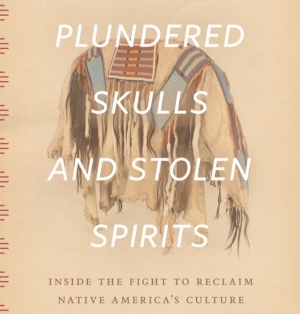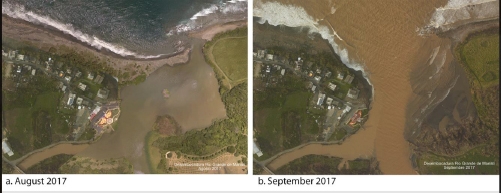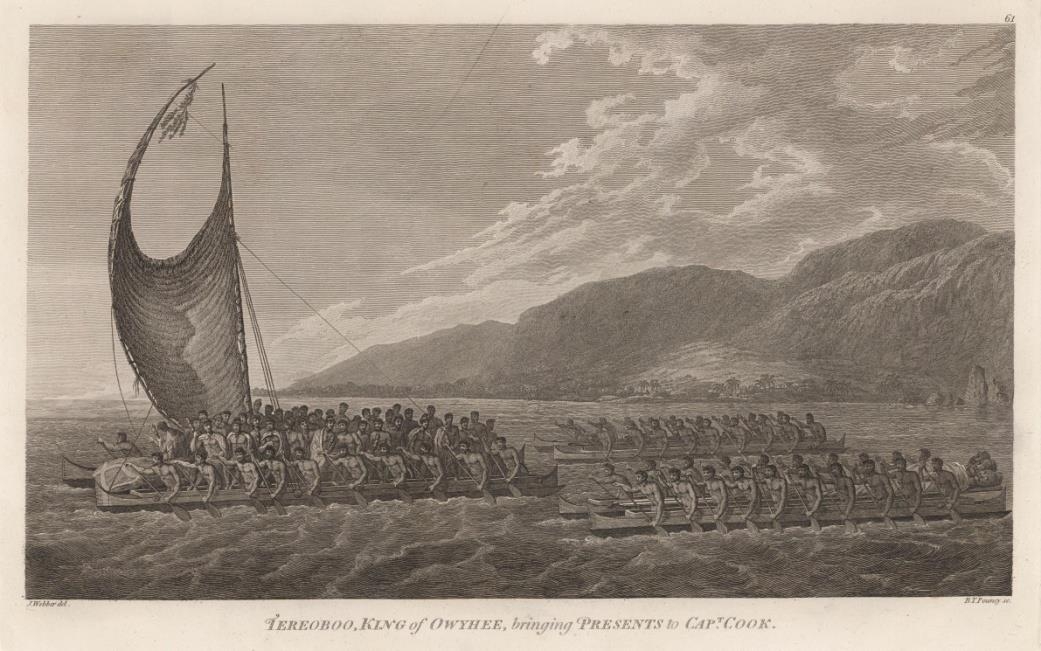Past Events
Interested in Cotsen events? Sign up for our mailing list.
Dr. Chip Colwell
Senior Curator of Anthropology, Denver Museum of Natural Science
Abstract:
Five decades ago, Native American leaders launched a crusade against museums to reclaim their sacred objects and to rebury their kin. This controversy has exploded in recent years as hundreds of tribes have used a landmark federal law to recover their heritage from more than one thousand museums across America. Many still question how to balance the religious freedoms of Native Americans with the academic freedoms of American scientists, and the arguments continue on about whether the emptying of museum shelves elevates human rights or destroys humanity’s common heritage.
This talk presents Dr. Colwell’s new book and winner of a 2017 Choice Outstanding Academic Book Title Award, Plundered Skulls and Stolen Spirits: Inside the Fight to Re claim Native America’s Culture, a personal journey that illuminates how repatriation has transformed both American museums and Native communities. This story reveals why repatriation law has become an imperfect but necessary tool to resolve the collision of worldviews between scientists and Native Americans—to decide the nature of the sacred and the destiny of souls.
Contact Sumiji Takahashi
Email sutakahashi@ioa.ucla.edu
Phone 310-825-4169

BIO:
Isabel Rivera-Collazo is Assistant Professor on Biological, Ecological and Human Adaptations to Climate Change at the Department of Anthropology and the Scripps Institution of Oceanography at UC San Diego. Dr. Rivera-Collazo is an environmental archaeologist specializing on geoarchaeology, archaeomalacology, coastal and marine processes, maritime culture and climate change, with regional interests in Puerto Rico, the Caribbean Basin and the Neotropics (Pan Caribbean region); Israel and the eastern Mediterranean. Her research focuses on the effect that human activity has over island ecosystems through time, as well as how have people responded to climatic and environmental change in the past. Dr. Rivera-Collazo’s work focuses on resilience and adaptation, investigating what decisions enhance or reduce adaptive success. Taking an applied approach, Dr. Rivera-Collazo also works with local communities in the quest for understanding the current and expected impacts of climate change, including threats to coastal heritage. Dr. Isabel Rivera-Collazo has a MSc degree on Palaeoecology of Human Societies and a PhD on Environmental Archaeology both from the Institute of Archaeology,University College London. She is also Research Fellow of the Center of Tropical Ecology and Conservation (CATEC) and the Laboratory of Environmental Archaeology at the University of Puerto Rico, Rio Piedras Campus.
ABSTRACT:
A popular proverb in Puerto Rico warns that “it is not the same thing to call the devil than to see him come”. For many years, scientists have been warning about the potential impacts of climate change. In the last five to ten years archaeologists have been linking those impacts to heritage. These past two years, 2017 and 2018, have demonstrated the real-life meaning of changing weather – which eventually will add up to changed climate – and it is not the same to see the devil come. In the context of rapidly changing weather, heritage is a tool for adaptation, for recovery of lost knowledge, and for communication of locally relevant climate science. But at the same time, this reality puts heritage professionals at the front of a social, physical and cultural disaster that is simply overwhelming. This presentation will share the experiences of working with archaeological heritage and climate change research in Puerto Rico before, during and after a record-breaking catastrophic year of hurricanes and winter storms, and will contextualize the work of archaeology in the practicality of equity and justice from within the communities themselves.
Contact Sumiji Takahashi
Email sutakahashi@ioa.ucla.edu
Phone 310-825-4169
Abstract
Evolution in conservation practice generally reflects wider contextual developments. These, whether scientific or societal, can however overshadow other developments within conservation which could inform scholarly studies of the objects and improve effective management of heritage assets. Awareness of these influences is nevertheless critical since any conservation action, regardless how small and seemingly unimportant can potentially affect how objects are perceived and interpreted. This talk will focus on research aimed at understanding object perceptions and professional cognitive dissonances and biases. Starting from the alteration and deterioration of surfaces as a natural process and cleaning as a professional reaction to this, I will discuss how small, often unaccounted for activities result in changes at both micro and macro levels which can dramatically alter an object.
Damien Hirst’s The Miraculous Journey made of fourteen silicon bronze statues projecting the development of a foetus from conception to birth located in Doha, Qatar will be used as an example of how to monitor change in a highly polluted coastal environment. This involves monitoring of corrosion, particulates and pollutants as well as humidity and temperature to understand how these processes affect perception and appreciation of the artwork. The second part of the talk will focus on professional decisions in conservation with particular a focus on cleaning. Cleaning can influence both professional and public perception of objects. The results of the research project Coming Clean which investigated factors affecting decision making in relation to cleaning will be presented. This includes research on public perception of dirt and cleanliness at two National Trust properties and two exhibition galleries at the British Museum, analysis of literature surveys and review of treatment records. The research findings are revealing in relation to professional justification of cleaning and the way public values the museum experience. Statistical analysis of the data and innovative methods including machine learning data mining methods will be presented. Recognising and raising awareness of our biases within conservation is important to change attitudes, and can have a direct impact on other scholarly fields.
Short bio
Stavroula Golfomitsou (BA, PhD, FIIC) is Senior Lecturer at the Department of Conservation, University of Gothenburg, Sweden. Prior to this she was a lecturer in conservation studies at UCL Qatar where she set up and coordinated the MSc in Conservation Studies, an innovative, student-led, inquiry- and research-based degree. She has over twenty years of international working experience in Europe, Middle East and Latin America. Her research interests focus on corrosion and conservation of metals and the broader implications of conservation on the perception and valorisation of heritage. She is coordinator of the Coming Clean research project which investigates decision-making processes in cleaning of cultural heritage and the factors affecting them. She was also PI in the Materiality and Preservation in Islamic Contexts project (2015-2017). Stavroula holds a PhD in Conservation of Metals from University College London (UCL) and is a Fellow of the International Institute for Conservation of Historic and Artistic Works (IIC) and a Trustee and member of the IIC Council.
Contact Sumiji Takahashi
Email sutakahashi@ioa.ucla.edu
Phone 310-825-4169
Ethics in Archaeology Panel Discussion
With Drs. Willeke Wendrich, John Papadopoulos, Lothar Von Falkenhausen, and Steven Acabado
This workshop will focus on the importance of what is coming out of the ground and what happens to it afterwards. The following questions will be among the topics discussed:
- Who is responsible for ancient artifacts and what are they responsible for?
- What are the grey areas?
- What is the difference between personal responsibility of individuals and professionals working at universities vs. individuals working with private or public collections?
- What relationship should there be between public and private stake holders?
- How do other countries handle issues regarding cultural heritage?
Attendance is highly recommended for 1st and 2nd year Cotsen Students
Contact Sumiji Takahashi
Email sutakahashi@ioa.ucla.edu
Phone 310-825-4169
Dr. Austin Nevin
CNR Researcher, Politecnico Milano
Binding media, metals and pigments in works of art are material history - and are evidence of technology, artist practice, exchange and trade. Through the study and identification of materials, crucial data can be collected regarding physical and chemical stability thus informing conservation decisions. Three case studies of works of art and archaeological materials will draw on current research using portable instrumentation and cutting-edge analytical methods. Investigations on wall painting fragments from the ancient Canannite capital Tel Kabri allowed the identification of degraded binding media from the Aegean style wall paintings that date to the 18th C. B.C.E. The discovery of traces of organic media in the characteristic blue paint is significant for the conservation and treatment of the paintings, for understanding of the sophistication of painting practise and the use of egg-based binding media in the Eastern Mediterranean, and more broadly also questions the presence of domestic animals in the region. The second case study focuses on Tutenkhamun’s dagger that was analyzed using portable instrumentation at the Egyptian Museum in Cairo. New data established conclusively that the well-conserved ornamental blade was fashioned from finely worked meteoritic iron. The identification was possible though the comparison of data acquired from the dagger with known meteor samples, and the calculation of ratios of Nickel and Cobalt. Organic red lake pigments are the focus of the third case study. Analysis demonstrates how deep crimson pigments from European insects were adopted by Leonardo in the Last Supper, and how, by contrast, Veronese adopted newly introduced Mexican pigments from cochineal insects. The molecular characterization of cross-sections demonstrate the use of similar kermes-based lakes in paintings by Leonardo and Masolino, and carmine-based reds in paintings by Tintoretto and Veronese, while also revealing soluble uncomplexed dyes in samples that has direct implications for conservation, cleaning and lighting. Research will ultimately demonstrate the benefits of synergistic collaborative studies across disciplines.
Contact Sumiji Takahashi
Phone 310-825-4169
Speaker: Dr. John Baines, University of Oxford
Studies of ancient Egyptian landscapes tend to focus on Upper Egypt, where the Nile valley is generally narrow and the low desert and the escarpment form a pervasive background. This focus is due in part to patterns of preservation of ancient sites, which disproportionately favor the Nile valley and desert regions. Yet from prehistoric times representations of landscapes that are integral to architectural forms and ritual settings show watery environments, which from the third millennium onward are often those of the delta. The delta landscape was much more enveloping for those who lived within it, while for travelers on land and particularly water its perspective lacked the relief and visibility of Upper Egypt. Its characteristics spoke even more strongly than those of the Nile valley to the importance of the river, to the liminality and impermanence that human society seeks to overcome, and to the perpetual renewal vouchsafed by abundant growth. The focus on such environments, which is ideologically crucial, is evident also in elite pastimes with their partly ritual associations.

Contact Matthew Swanson
Email mswanson@ioa.ucla.edu
Phone
Speaker: Dr. Mohamed Ali, American Sudanese Archaeological Research Center
The Meroitic kingdom is an ancient kingdom in Nubia, located and flourished at the confluences of the Blue Nile, White Nile and River Atbara, in Sudan. Researchers, with no convincing evidence, have argued that tribal movements within the Meroitic territory and the Axumite invasion from the east (Ethiopia) caused the collapse of the Meroitic state. Here I consider the nature of the political economy in order to provide a better understanding of the collapse and the regeneration of the Meroitic state. I employ theoretical frameworks to the collapse of the Meroitic state, c. 350 B.C.-A.D.350, and regeneration during the Post Meroitic period (4th century to 7th century AD). I investigate how the nature and the manifestation of Meroitic sociopolitical power changes during and after the collapse of the Meroitic state.
Mortuary practices and settlement patterns studies are used here to determine changes in local identity and social roles that reflect the integration and/or lack of integration of the hinterlands in the Meroitic and Post Meroitic sociopolitical systems. I demonstrate that local elites on the east bank and east hinterland re-established a polity based in the old Meroitic settlements and redeployed Meroitic symbols to legitimize and reinforce their authority and power.
The locals on the west bank were not well integrated into the Meroitic sociopolitical system. They eventually became a real threat that impacted the Meroitic central power together with the Axumite threat from the east and the economic recession in the Mediterranean market. Elites on the west bank would have taken advantage of the weakness of the Meroitic central power and manipulated trade networks and formed local alliances that led to political and economic independence.

Contact Matthew Swanson
Email mswanson@ioa.ucla.edu
Phone
Speaker: Dr. Stratos Stylianidis, Aristotle University of Thessaloniki
Cultural heritage is our deep soul. It is the unique legacy for all societies worldwide, but at the same time our common responsibility. A value rewards humanity by providing the classical and universal principles. It provides the panhuman context of mutual understanding, respect, liberty and expression. The protection of cultural heritage is a matter for all and its recording and documentation a vital step towards preservation. The first part of this talk addresses the cultural heritage documentation context, the international framework on documentation by international charters and conventions, and the real needs that push organizations and people to operate in this process. Various sensors and platforms, both from image-based and range-based technology illuminate how scientific research and practice, transpose the real object to a 3D model. Commercial and open source tools for data processing, management and representation are presented likewise. The presentation of innovative mobile mapping systems enabling data capture and management for cultural heritage information of various scales, is closing this talk.

Contact Matthew Swanson
Email mswanson@ioa.ucla.edu
Phone
Speaker: Dr. Giorgio Buccellati, Professor Emeritus of Near Eastern Languages and Cultures, UCLA
The recent publication of a book on theory (same title as this talk, Cambridge 2017), has its roots in a long and intense confrontation with the experience of field work, which began for me in Iraq and Turkey in the '60s: it was a very practical experience which elicited, by contrast, a strong interest in theory. It was also the beginning of the digital era, which we marked with the introduction of a bulky pre-PC computer to Terqa in 1978, the first of its kind in Syro-Mesopotamia: such an early start, too, conditioned my subsequent work in this area, with an emphasis on modes of thinking beyond technology per se. Starting from these conditioning factors, I will outline the basic points of the book, as defined in the subtitle: structural, digital and philosophical aspects of the excavated record. I will then describe the structure and goals of the accompanying website, with an invitation to collaborate in its continued operation.

Contact Matthew Swanson
Email mswanson@ioa.ucla.edu
Phone
Speaker: Dr. Mark McCoy, Associate Professor, Department of Anthropology, Southern Methodist University
The archaic form of state society evolved independently at least six times in prehistory – in Mesopotamia, Egypt, China, the Indus Valley, Mesoamerica, and coastal Peru – and marks a turning point that was fundamental to the creation of modern society. New research suggests another, much more recent, example of the formation of archaic states occurred in the Hawaiian Islands. Located in the North Pacific, the archipelago of islands that make up the Hawaiian chain are so naturally isolated that they remained undiscovered by people until Polynesian voyagers established a new settlement there around AD 1000. By the time of first contact with Europeans, 800 years later, it was home to hundreds of thousands of people governed by independent kingdoms. How did this occur, and what does it tell us about the moment in history when chiefs became kings? In this lecture, I will draw upon nearly twenty years of field research in Hawai‘i and outline what we currently know about the creation of these island kingdoms through archaeology and local oral histories, with the goal of explaining why society transformed and what these changes tell us about the larger course of human prehistory.

Contact Matthew Swanson
Email mswanson@ioa.ucla.edu
Phone
- ‹ previous
- 2 of 7
- next ›


